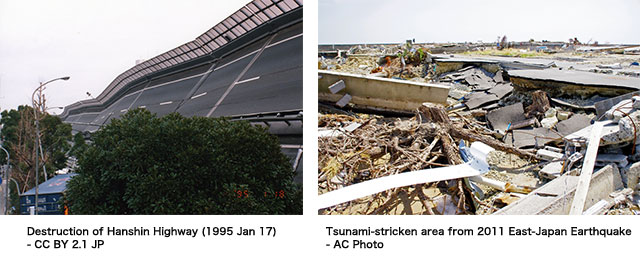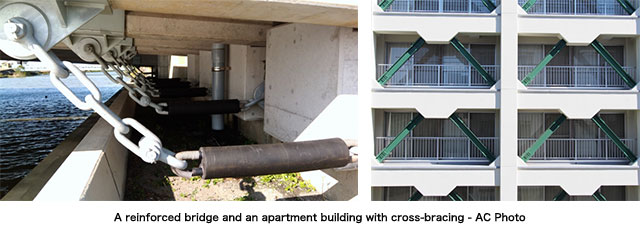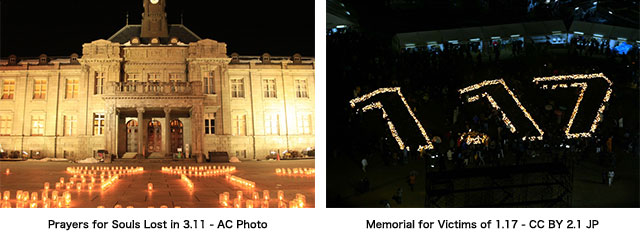News
January - Preparing for Earthquakes in Japan Updated in January 2020
How do you build a large society on top of four tectonic plates? This is the problem that Japan has had to struggle with for millennia, but even more so over the last 70 years. Buildings are bigger, more expensive, and hold more people; cities are larger and denser, with more complex infrastructure; and global economies are reliant on each other’s stability.
Until the second half of the 20th century, natural disasters in Japan would regularly result in thousands of deaths per year. But in the 1950s and 1960s, Japan passed several laws, such as the Building Standards Act and the Disaster Countermeasures Basic Act, that helped to set the groundwork for its world-famous infrastructure. Nowadays, with the exception of large-scale disasters like the 1995 Great Hanshin-Awaji Earthquake (1.17) and the 2011 Great East Japan Earthquake (3.11), deaths from natural disasters per year have been reduced to the dozens or low hundreds.

What exactly saves lives, though? Here are just a few short examples of the infrastructure that has been built up:
- Earthquake-Resistant Construction Building construction standards in Japan have been gradually raised over the decades. Most buildings, especially those build after 1981, are earthquake-resistant to some degree. It should be noted that no structure is completely earthquake-proof. During the 1995 Hanshin-Awaji Earthquake, over 400,000 buildings and other structures, many of them earthquake-resistant, were destroyed.

- Earthquake Early Warning (EEW) As of 2015, over 4,300 seismometers blanket Japan and record seismic data. If an earthquake with an intensity of 5 or greater is detected, the information is instantly relayed to televisions, radios, and cell phones throughout the region. Since 2007, the J-Alert system has been installed on almost all mobile phones sold in Japan, and their early warning alarm has become familiar to virtually all residents.
- Plans for Before & After In addition to mandatory safety drills and education for schoolchildren and employees nationwide, the government has funded extensive research into understanding Japan’s seismology and predicting future large-scale earthquakes. This research has allowed regional governments to prepare countermeasures to prevent and reduce injury and loss of life, as well as to plan orderly reconstruction efforts. Unfortunately, many of these disaster plans are not available in English. You can find your city’s plan by entering “地区防災計画” and your city’s name in Japanese into a search engine. Larger cities such as Tokyo, Osaka, and Sapporo do have disaster-related information available in English.
Speaking of preparedness, those in Japan or coming to Japan should be aware of two large-scale earthquakes that have a high chance of occurring over the next 30 years. The first is a large M7-class earthquake is expected in the Tokyo area; the second is an extremely destructive M8~9-class earthquake is expected from the Nankai Trough.
Residents of Japan should invest time into understanding earthquake preparedness, including making or buying an emergency survival kit.
If you want to read more on this subject go to “Facing Natural Disasters.”








